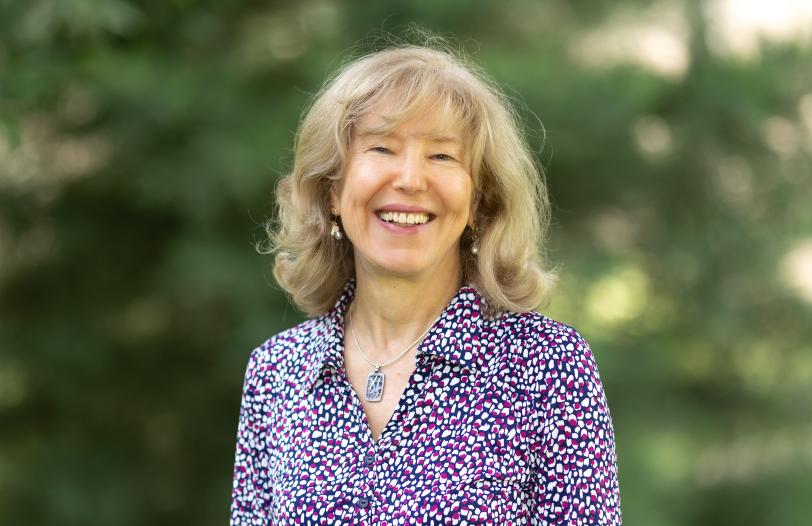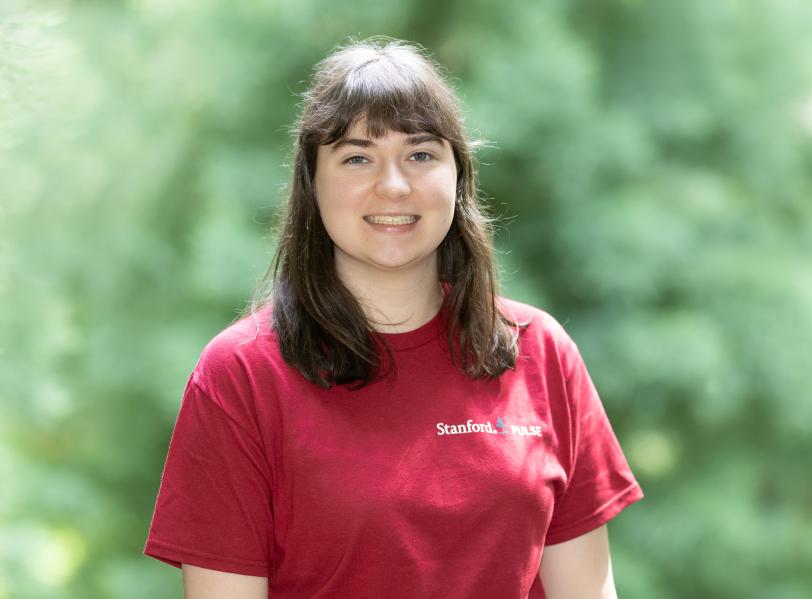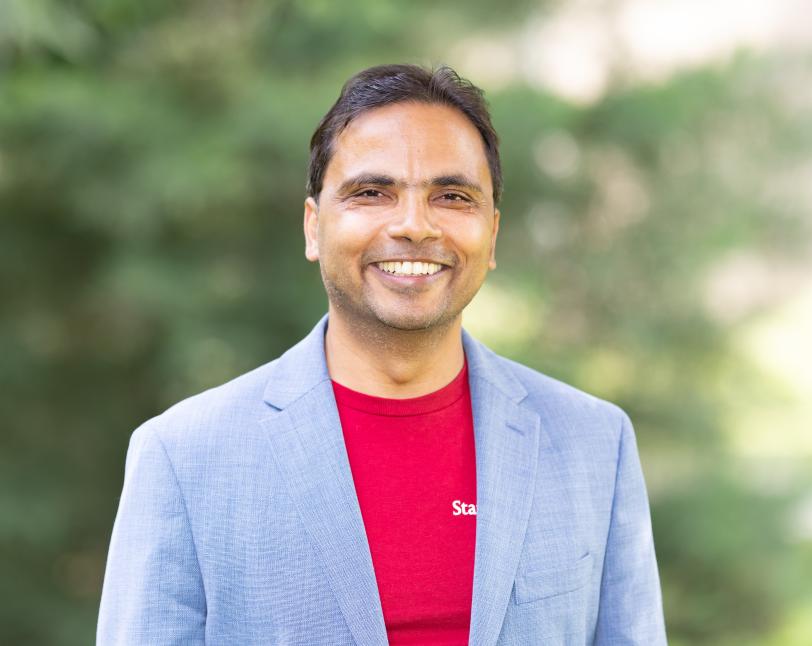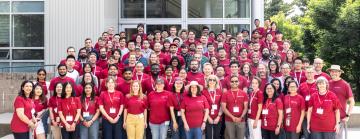Training the next generation of ultrafast X-ray scientists
The Ultrafast X-ray Summer School, run by the Stanford PULSE Institute and hosted at SLAC, opens the door for students and postdocs to imagine how they could use X-ray free-electron lasers in their future careers.
By Chris Patrick

Bright, short pulses of X-rays produced by free-electron lasers, or XFELs, allow researchers to image motions of molecules and atoms with unprecedented detail and study biological, chemical, and material processes in real time – but first researchers have to learn how to use those X-rays. From June 17 to 20, more than 130 undergraduate students, graduate students, and postdocs immersed themselves in this powerful technology at the Department of Energy’s SLAC National Accelerator Laboratory.
The annual Ultrafast X-ray Summer School (UXSS), run by the Stanford PULSE Institute at SLAC with primary funding from the DOE Office of Science's Basic Energy Sciences program, has educated thousands of students from at least 10 countries during its 18 years of operation. Many of these students have been inspired to join the field of ultrafast X-ray science through the knowledge and connections they gained during the summer school.
“This school is accelerating the making of the new generation of scientists by exposing them to new and different science that they cannot access at their home institution,” said Nora Berrah, a University of Connecticut physicist who initiated and chaired the first school in 2007. “It is priceless!”
Unique access to a powerful machine
Through lectures, the students learn how ultrafast X-rays are used to conduct groundbreaking research across various research areas: XFEL physics, atomic, molecular, and optical science, materials science, chemistry, biology, and high-energy density science.
This year, most of the lecturers gave two talks each. In the first, a lecturer presented the fundamentals of their field. In the second, they went into more technical detail about a particular subject. Berrah, who returned to the school as a lecturer this year, discussed the basics of how XFELs can transform and probe samples during atomic and molecular physics and physical chemistry experiments. Her more technical talk focused on studying energy and charge transfer in molecular systems, which is facilitated by XFELs’ site specific probing of atoms in samples.

The school also capitalizes on SLAC’s Linac Coherent Light Source, the world's most powerful XFEL, offering the students the opportunity to visit the machine and chat with its beamline scientists, who can explain how different time-resolved experiments require varying XFEL and table-top laser specifications.
“Proximity to LCLS is pivotal to the summer school’s success” said Shambhu Ghimire, the chair of this year’s school and principal investigator at the Stanford PULSE Institute.
As a visual learner, Sophia Vogelsang, a PhD student at University of Wisconsin-Madison and UXSS 2024 attendee, found the trip to LCLS enlightening. Vogelsang currently employs spectroscopy to study the chemistry of Australian plant exudates, a natural plant binder material used by Aboriginal peoples.
“I didn't have a lot of prior knowledge about ultrafast X-rays and free-electron lasers, so this was definitely a cool opportunity to learn more about them from a lot of different people in different disciplines,” Vogelsang said. “Moving forward, I'm definitely excited to see if I can come to these facilities again, but as a user.”
Collaboration across decades
While postdocs may know which research areas they’re interested in prior to attending UXSS, students, which made up about 60 percent of the attendees this year, are more likely to still be figuring out which subjects strike their fancy.
After a few lectures, the participants – undergrads, grad students and postdocs alike – form groups of 10 based on which subjects have most piqued their curiosity. These groups then prepare and present mock proposals for X-ray free-electron laser research. At first, Vogelsang was nervous about crafting a proposal, but it ended up being one of her favorite parts of the event. Her group proposed to use ultrafast X-rays to study charge transfer over time in ligated gold nanoparticles.
“I think the connections I’ve made are the most valuable,” she said. “I’ve met a lot of interesting and friendly people that I would hope to see again in the future as colleagues and peers.”

Networking occurs not only among students, but also between lecturers and students. Ghimire attended the first summer school in 2007, when he was a PhD student at Kansas State University searching for postdoc positions. During that school, Ghimire met Pierre Agostini, a lecturer who would go on to receive the 2023 Nobel prize in physics for generating attosecond pulses of light to study electrons. Because of the school, Ghimire ended up joining the field of ultrafast X-ray science and working with Agostini on experiments and papers.
“As I progressed in my career, so did the relationships I made at the school,” Ghimire said.
UXSS’s past, present, future
Berrah had the idea to start UXSS in 2006, when she was visiting the Stanford PULSE Institute. As a Scientific Advisory Committee member for LCLS, Berrah recognized the distinct importance of the machine, which was under construction at the time.
“It occurred to me that it would be a good idea to start training the next generation of scientists about this new tool and the possibility of exciting new research,” Berrah said. She organized the first summer school with her host, Phil Bucksbaum, who was the director of the Stanford PULSE Institute then. 120 students and 20 lecturers attended; they spent the week exploring what the LCLS would be capable of measuring in many fields of research
When the LCLS came online in 2009, it was able to produce novel femtosecond X-ray pulses, a billion times brighter than any prior source of X-rays. Since then, the facility has undergone upgrades, including LCLS-II, which produces X-ray pulses 8000 times faster, opening up a new era of high-repetition-rate XFELs that will require this generation of researchers to invent new data science and artificial intelligence and machine learning techniques.
“I think the success of the summer school is strongly related to the progress that we have made at LCLS in terms of what type of science we can do,” Ghimire said. At the beginning of UXSS 2024, PULSE Director David Reis provided a historical perspective of the summer school.
Today, X-ray free-electron laser facilities are emerging worldwide, and the school has grown and evolved with the field of ultrafast X-ray science. This year was the biggest school since 2007, and the German Electron-Synchrotron (DESY) has been hosting UXSS periodically with SLAC since 2011. As of last year, UXSS is now hosted internationally. In 2023, the school was held at the Center for Free-Electron Laser Science in Germany. Next year, it will be hosted for the first time by the Paul Scherrer Institute in Switzerland. Every other year the school will return to SLAC, its home institution.
“By sharing our summer school with the rest of the world, we have an international impact. Since we are training the new generation of scientists globally, this will in turn advance science even faster,” Berrah said. “For the future, we want to continue training the scientific workforce that will push ultrafast X-ray science even further.”
LCLS is a DOE Office of Science User Facility.
For questions or comments, contact the SLAC Strategic Communications & External Affairs at communications@slac.stanford.edu.
About SLAC
SLAC National Accelerator Laboratory explores how the universe works at the biggest, smallest and fastest scales and invents powerful tools used by researchers around the globe. As world leaders in ultrafast science and bold explorers of the physics of the universe, we forge new ground in understanding our origins and building a healthier and more sustainable future. Our discovery and innovation help develop new materials and chemical processes and open unprecedented views of the cosmos and life’s most delicate machinery. Building on more than 60 years of visionary research, we help shape the future by advancing areas such as quantum technology, scientific computing and the development of next-generation accelerators.
SLAC is operated by Stanford University for the U.S. Department of Energy’s Office of Science. The Office of Science is the single largest supporter of basic research in the physical sciences in the United States and is working to address some of the most pressing challenges of our time.






